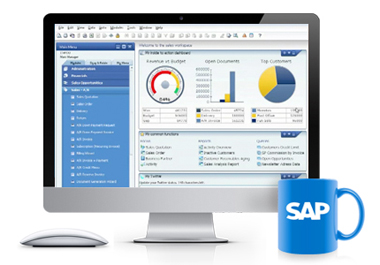Strategic Enterprise Resource Planning
Wise business owners will agree that enterprise resource planning (ERP) software has become a strategic platform for carrying out common business functions, from human resources to financial management. The importance of these all-in-one systems of integrated accounting, customer relationship management (CRM) and inventory management often requires corporate IT departments to integrate their ERP systems with other strategic computing resources such as client-server, Web, and legacy applications.
ERP systems are the primary means companies use to automate business processes. But these business processes often transcend departmental and even company boundaries. Enterprise application integration is a complex process that can have a profound effect on the IT architecture.
The major ERP vendors–Baan, J.D. Edwards, PeopleSoft, SAP, and others–all publish APIs that let external applications communicate with the ERP system. While APIs are a good way to provide information access, they’re often not sufficient for distributed processing across different applications.
That’s why a number of development tool vendors are broadening the scope of their programming environments to address the needs of enterprise application integration.
ERP Integration Approaches:
It would appear at first glance that the publication of APIs that can be used to access ERP data and metadata provides a solution for ERP integration. The reality, however, is quite different. To illustrate one problem, consider what’s required to integrate two ERP applications at the data level. Developers write a low-level API to read data from the first ERP system. They then write more code to transform the data, and finally write the data out to a file in the second vendor’s format.
Writing multiple low-level APIs is difficult, time-consuming, and costly. Keeping the interfaces current as the packaged software changes is also a challenge. The manual maintenance of such programs is nearly impossible, especially for smaller organizations.
Now consider what happens if the number of ERP implementations is increased. Two partnering systems require one interface, three systems require three, but as the number of partnering systems is increased past three, the number of interfaces increases dramatically.
This only points out the theoretical problems when integrating disparate software systems. There are also the issues of dealing with multiple operating systems, communication protocols, and data types.
Recently, a new class of middleware has appeared on the market that opens application packages to the enterprise without the need to write low-level APIs. The amount of industry attention paid to this new class of integration software speaks volumes about the need to extend the reach of ERP systems.
At the most basic level, ERP integration middleware vendors can be broken down into two groups. The first make data-oriented products that support ERP integration primarily by sharing data sources. The data-oriented segment are represented by vendors such as Argent, Carlton Software, and SmartDB. These vendors’ products extract and transform data, and subsequently exchange data files between ERP packages and other applications.
Contact Cornerstone Consulting for ERP: Software, Implementation, Integration, Web Services, and Tech Support
Since 1983 Cornerstone Consulting has been providing business software systems, as well as related technical support, to small and midsized manufacturing and wholesale distribution enterprises. With the expertise of Cornerstone’s highly-skilled programming staff and SAP’s ERP system for small and midsized businesses, SAP Business One, your enterprise can run better than ever before. Why do so many small and midsized companies rely on Cornerstone to provide them with ERP software and services? Simply stated, our level of experience is superior. Learn more about the SAP Business One ERP solution, call Cornerstone Consulting at 813-321-1300.


